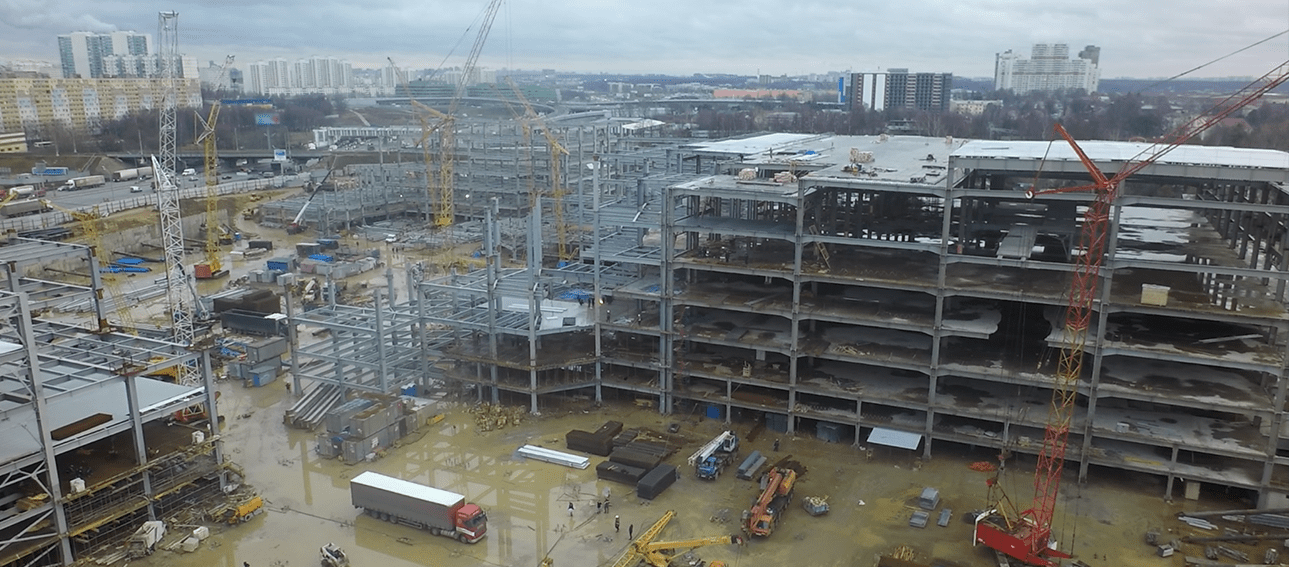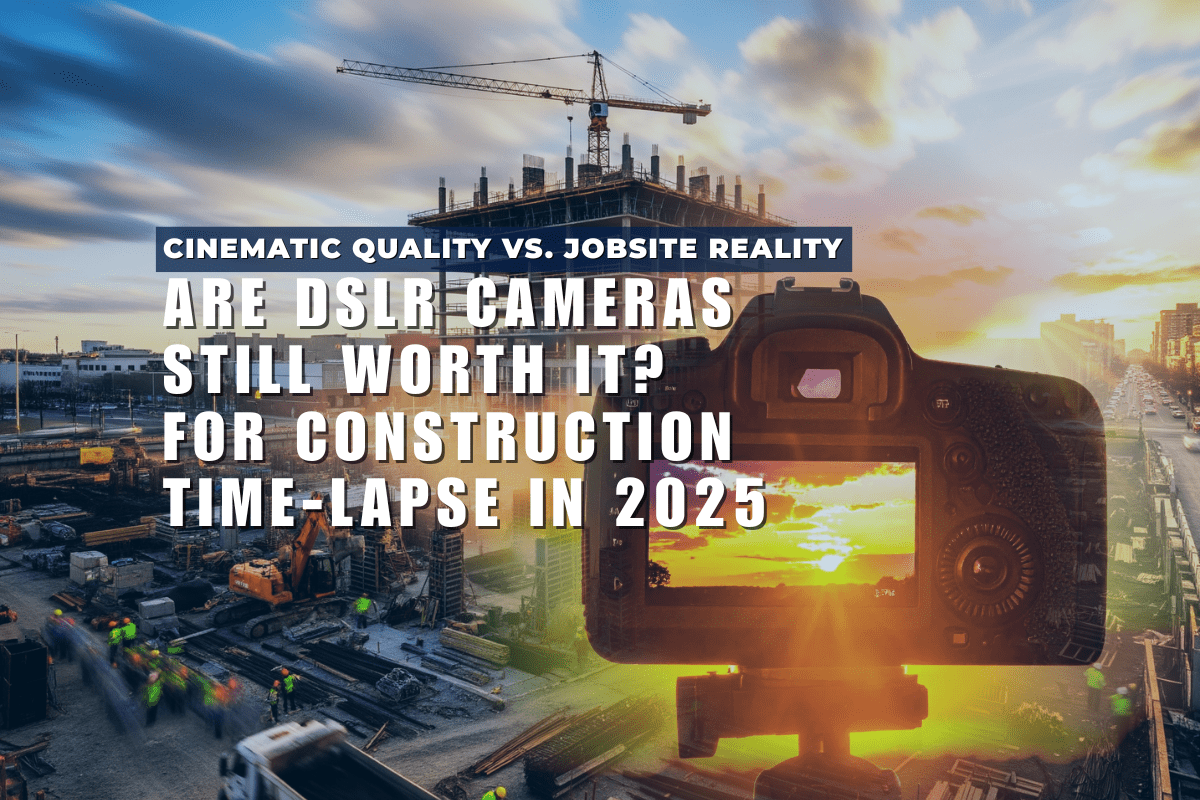While most agree that time lapse is a fantastic way to document the progress of your construction project, capturing time lapse footage can be challenging when faced with extreme weather conditions, no matter the season.
Planning for these conditions can feel overwhelming, as it seems you must have a solution for a long list of weather issues ahead of time. Your camera and battery equipment may shut down if it’s too hot or cold. Water from precipitation or humidity can damage your equipment. A rogue gust of wind might shift or knock your camera over.
Stressed yet? Don’t be. A little preparation and planning will help address these risks proactively—so you can rest a little easier knowing your set-up is ready for anything mother nature throws at it. Read on for all-weather tips, tricks, and considerations to take into account when you’re in the planning stage of your construction time lapse project.
Start with the right foundation
Before you plan for the installation, you must consider how long the project will last, what seasons you will encounter, and the resulting precautions you need to take.
There are three steps that are the foundation for protection against foul weather:
- Placement and mounting - most projects require cameras to be elevated, often on poles. These are particularly susceptible to high winds. Ensure each pole has the proper footings, either with deep enough holes or even poured concrete to secure them against high winds;
- Weather-proof enclosure - proper all-weather cases for your camera and power supply provide much better protection than a weather-resistant camera. We will explore modifications and additions to these weather-proof enclosures for greater protection below;
- Remote monitoring - the two most common foul weather problems are 1) camera failure and 2) a shift in the camera frame. The ability to monitor your time lapse remotely allows you to detect problems before losing days or weeks of images;
These precautions will protect you against most weather-related challenges. Following is how to protect against extremes.
Extreme temperatures can stop your time lapse
Time lapse cameras are designed to operate within a specific temperature range, and anything beyond this range can cause issues with the camera's performance. For example, high temperatures can cause the camera's sensors to overheat, leading to distorted or unclear images. Conversely, low temperatures can cause the camera's batteries to drain quickly, leading to shorter battery life and the potential camera shut down.
The cameras most frequently used for construction time lapse have an operating range of between 32º and 104ºF. The camera is likely to shut down above or below this range.
Like time lapse cameras, batteries are also sensitive to temperature changes. Lower temperatures can cause the battery's output to decrease, while higher temperatures can cause the battery to overheat and potentially explode. In extreme temperatures, batteries can fail to charge or lose their charge quickly, leading to camera shutdown.
We have all left our smartphone in direct sunlight and gotten the temperature warning.

Protection from temperatures below freezing
A protective case alone will not prevent the camera and batteries inside from dropping below 32º. Here are several ways to protect against temperatures below freezing:
- Adhere neoprene or other insulating material to the inside of the enclosure case;
- Wrap the external battery in insulation;
- Use a higher-output solar panel to power a small heater inside the enclosure;
- If you have external power to the camera, install a small heater into the enclosure;
- Switch to lead-acid batteries instead of lithium-ion, which can operate at a lower temperature
For temperatures above 104º
A camera enclosure in direct sunlight can reach temperatures above the safe operating range of the camera and batteries inside. Following are simple tricks to prevent overheating on those hot summer days:
- Wrapping the enclosure in tin foil;
- Putting an umbrella above the enclosure to keep it out of direct sunlight;
- Reduce the frequency of image capture from 2 to 15 minutes in order to reduce heat generation from the camera and battery.
Water and humidity are the next environmental challenges
Rainfall in places like Vancouver or Florida can present a problem for the camera even if it's in an enclosure.
Ensure that the gasket on the enclosure is properly seated and that no cables or insulation interfere with the gasket.
For almost any installation, it is advisable to apply caulking to the outside of the enclosure around the lens to ensure a proper seal.
For humidity, especially in more tropical climates, we recommend placing silica gel packets inside the camera enclosure.
Keys to the success of your time lapse project
Capturing construction timelapse footage can be a great way to document the progress of a project. Still, it can also be challenging when faced with extreme weather conditions. When planning the setup, it is important to consider the location, time of year, and overall likelihood of extreme weather.
A proper all-weather setup, including placement and mounting, weather-proof enclosure, and remote monitoring, is the foundation for protection against foul weather.
However, extreme temperatures, water, and humidity can still pose challenges. To protect against extreme temperatures, it is important to adhere to the camera's operating range and take precautions such as insulation, a small heater, or switching to lead-acid batteries.
For water and humidity, ensuring a proper seal on the enclosure and using silica gel packets can help prevent damage.
By taking these steps, construction professionals and photographers can ensure that their equipment and projects are protected and can capture the full story of their progress.
Ready to start your time lapse project?




